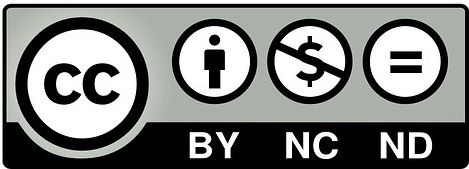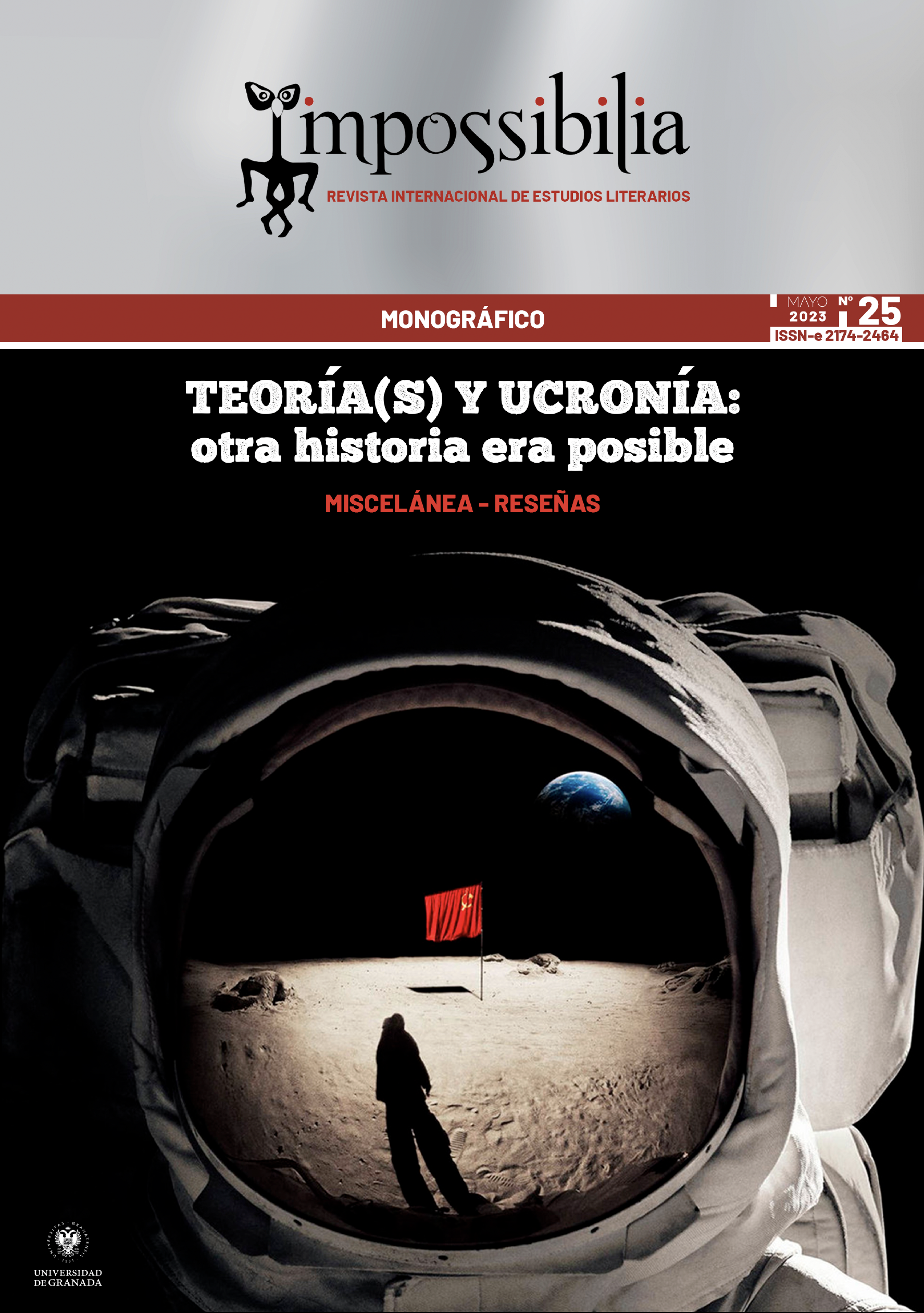The Circular Evolution of Charlotte Perkins Gilman’s Gender Discourse: Traces of Utopia and Dystopia 'The Yellow Wallpaper' and "Herland"
DOI:
https://doi.org/10.30827/impossibilia.252023.26941Keywords:
utopia; dystopia; circular evolution; trace; gender.Abstract
This article argues that the transformation of Charlotte Perkins Gilman's gender discourse from dystopia to utopia, exemplified by means of the commonly perceived evolution from her tale "The Yellow Wallpaper" (1892) to her novel Herland (1915), does not follow a linear trajectory from oppression to feminist jubilee, but rather presents a circular progression. As an author, Gilman is able to encounter spaces of creativity in creative displays of female insanity as a result of patriarchal subjection, and instances of subjugation in idealised all-female contexts. Both works contribute manifestations of oppression and exultation, even if they were written at different stages of the author's career, and have conventionally been considered as significantly dissimilar in their respective gender approach. This article aims to delineate a tendency toward circular evolution rather than linear progression by means of unveiling displays of utopia in “The Yellow Wallpaper” and of dystopia in Herland. These premises will be achieved through a comparative analysis of "The Yellow Wallpaper" and Herland by means of identifying traces of narratological features pertaining to dystopian and utopian fiction in both works.
Downloads
References
ATTEBERY, Brian. (2000). Women Alone, Men Alone: Single-Sex Utopias. FemSpec, 1(2), 4-15.
BOOKER, M. Keith. (1994). Woman on the Edge of a Genre: The Feminist Dystopias of Marge Piercy. Science Fiction Studies, 21, 337-350.
CLAEYS, Gregory; & TOWER SARGENT, Lyman. (1999). The Utopia Reader. New York: New York University Press.
CLAEYS, Gregory. (2016). Dystopia: A Natural History. Oxford: Oxford University Press.
ECK, Gregory. (2001). Utopian Literature: A Guide. HTML. http://faculty.citadel.edu/hutchisson/Pages/utopbib.htm
EGAN, Kristen. (2011). Conservation and Cleanliness: Racial and Environmental Purity in Ellen Richards and Charlotte Perkins Gilman. Women’s Studies Quarterly, 39(3), 77-92.
EVANS, Lynne. (2014). You See, Children Were the—the Raison d’Être: The Reproductive Futurism of Charlotte Perkins Gilman’s Herland. Canadian Review of American Studies, 44(2), 302-319.
GILBERT, Sandra; & GUBAR, Susan. (1979). The Madwoman in the Attic: The Woman Writer and the Nineteenth-Century Literary Imagination. New Haven: Yale University Press.
GILMAN, Charlotte Perkins. (1991). The Living of Charlotte Perkins Gilman: An Autobiography. Madison: University of Wisconsin Press.
GILMAN, Charlotte Perkins. (1998). Herland. New York: Dover.
GILMAN, Charlotte Perkins. (2009). The Yellow Wallpaper and Selected Writings. London: Virago.
GOLDEN, Catherine. (Ed). (1992). The Captive Imagination: A Casebook on The Yellow-Wallpaper. New York: The Feminist Press.
GOLDEN, Catherine. (2002). Caging the Beast: The Radical Treatment for ‘Excessive Maleness’ in Gilman’s Fiction. In GOLDEN, Catherine; & SCHNEIDER ZANGRANDO, Joanna. (Eds). The Mixed Legacy of Charlotte Perkins Gilman (pp. 122-134). Newark: University of Delaware Press.
HEDGES, Elaine. (1973). Afterword. In Elizabeth Perkins Gilman. The Yellow Wallpaper (pp. 37-60). Oxford: Oxford University Press.
HILL, Mary (1980). Charlotte Perkins Gilman: The Making of a Radical Feminist, 1860-1896. Philadelphia: Temple University Press.
HUGHES, William. (2016). Medicine and the Gothic. In HUGHES, William; PUNTER, David; SMITH, Andrews. (Eds). The Encyclopaedia of the Gothic (pp. 438-442). Oxford: Blackwell.
JOHNSON, Greg. (1989). Gilman’s Gothic Allegory: Rage and Redemption in ‘The Yellow Wallpaper.’ Studies in Short Fiction, 26(4), 521-530.
KARPINSKI, Joanne (2000). The Economic Conundrum in the Life-Writing of Charlotte Perkins Gilman. In GOLDEN, Catherine; SCHNEIDER ZANGRANDO, Joanna Schneider. (Eds). The Mixed Legacy of Charlotte Perkins Gilman (pp. 35-45). Newark: University of Delaware Press.
KESSLER, Carol Farley. (1995). Charlotte Perkins Gilman: Her Progress Toward Utopia, with Selected Writings. Syracuse: University of Syracuse Press.
KESSLER, Carol Farley. (2000). Dreaming Always of Lovely Things Beyond: Living toward Herland, Experiential Foregrounding. In GOLDEN, Catherine; SCHNEIDER ZANGRANDO, Joanna. (Eds). The Mixed Legacy of Charlotte Perkins Gilman (pp. 89-102). Newark: University of Delaware Press.
LANE, Anne. (1990). To Herland and Beyond: The Life and Work of Charlotte Perkins Gilman. New York: Pantheon.
ÖZYÖN, Arzu. (2020a). A Comparative Analysis of Feminist Approach to All-Female Worlds in Charlotte Perkins Gilman’s Herland and Joanna Russ’s ‘When It Changed.’ Atatürk Üniversitesi Edebiyat Fakültesi Dergisi, 64(1), 91-105. https://dergipark.org.tr/tr/download/article-file/1171286
ÖZYÖN, Arzu. (2020b). A Journey of Feminist Rebellion through Charlotte Perkins Gilman’s Short Story ‘The Yellow Wallpaper’ and Her Novel Herland. International Journal of Language Academy, 8(5), 115-124. https://ijla.net/?mod=tammetin&makaleadi=&key=47013
RABKIN, Eric; GREENBERG, Martin; OLANDER, Joseph. (Eds). (1983). No Place Else: Explorations in Utopian and Dystopian Fiction. Carbondale: Southern Illinois University Press.
REID, Robin Anne. (2004). ‘Momutes’: Momentary Utopias in Tepper's Trilogies. In BARTTER, Martha. (Ed). The Utopian Fantastic: Selected Essays from the Twentieth Conference on the Fantastic in the Arts (pp. 89-102). New York: Praeger.
RINGEL, Faye. (2016). New England Gothic. In HUGHES, William; PUNTER, David; SMITH, Andrews. (Eds). The Encyclopedia of the Gothic (pp. 465-468). Oxford: Blackwell.
SHOWALTER, Elaine. (1977). A Literature of Their Own: British Women Novelists from Brontë to Lessing. Princeton: Princeton University Press.
SHOWALTER, Elaine. (1985). The Female Malady: Women, Madness, and English Culture, 1830-1980. London: Virago.
TIERNEY, Helen. (1999). Women’s Studies Encyclopaedia. Westport: Greenwood Publishing Group.
TODOROV, Tzvetan. (1975). The Fantastic: A Structural Approach to a Literary Genre. Ithaca: Cornell University Press.
TOWER SARGENT, Lyman. (2010). Utopianism: A Very Short Introduction. Oxford: Oxford University Press.
TREICHLER, Paula. (1984). Escaping the Sentence: Diagnosis and Discourse in ‘The Yellow Wallpaper.’ Tulsa Studies in Women’s Literature, 3(1/2), 61-77.
TUTTLE, Jennifer. (2000). Rewriting the West Cure: Charlotte Perkins Gilman, Owen Wister, and the Sexual Politics of Neurasthenia. In GOLDEN, Catherine; SCHNEIDER ZANGRANDO, Joanna. (Eds). The Mixed Legacy of Charlotte Perkins Gilman (pp. 103-121). Newark: University of Delaware Press.
WOOLF, Virginia. (1935). A Room of One’s Own. London: Hogarth Press.
Published
How to Cite
Issue
Section
License
Copyright (c) 2023 Impossibilia. Revista Internacional de Estudios Literarios

This work is licensed under a Creative Commons Attribution-NonCommercial-NoDerivatives 4.0 International License.

You are free to share, copy and redistribute the material in any medium or format under the following terms: You must give appropriate credit, you may not use the material for commercial purposes and No Derivatives. Commits to respecting third party intellectual property rights.
Reception and proccesing of papers has no costs for authors.
Author assumes responsibility for the ideas contained in the article.
Papers must be original and must not have been published before and at the moment they are submitted, papers should not be in the process of evaluation by any other electronic or printed media.
The authors are allowed and recommended to publish their published work through the internet. It could produced interesting exchanges and increase the published work citation. (See El efecto del acceso abierto).




















